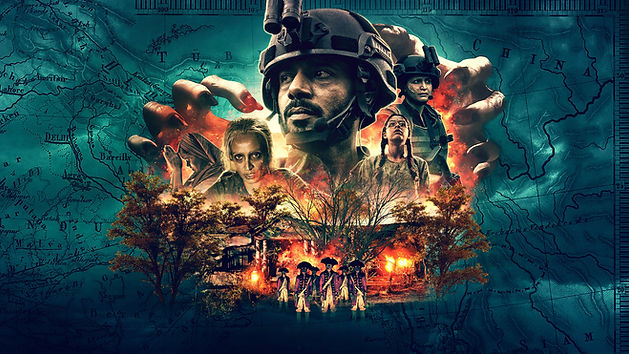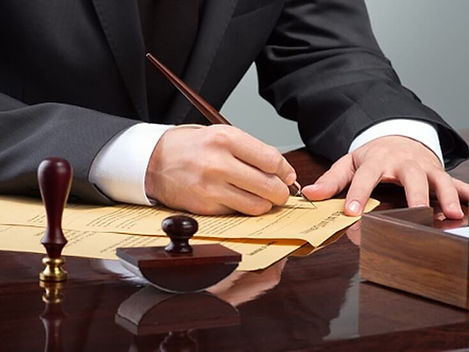I frequently receive calls from my clients complaining about copyright infringement. How can you know that someone has infringed the copyright in your work? What do you need to assure before filing any complaint in this regard? In this article, I am going to address this crucial aspect. Let me begin with a typical example;
My client, Mr. A called me to explain his case. He said, “Madam! I just watched the trailer of an upcoming web series titled ‘The Monster’ (imaginary name here). ABC Production house is the producer of the same. It has copied my work!!! This web series is about a supernatural creator hidden in a dense forest. He kills anyone who passes the forest. Later on, a gang of school-going children reveals that the monster is a cursed creator trapped in a tree. My unpublished script titled ‘ the Ghost’ has the same plot. In my script, there is a cursed soul trapped in a forest. Four school kids help him to liberate at the end.
I had circulated my scripts to several people in the industry. I do not understand how my script reached to ABC Production house. Please help me!
What do you think? Does Mr. A has a case of copyright infringement against ABC Production house? We need to examine two broad questions to conclude this. First, is there any point of contact between Mr. A. and ABC Production House? Second, is there any substantial similarities between the two works? These are two fundamental questions that we have to address in any copyright infringement claim. In this article, I am going to explain the first question that is the importance of proving the point of contact. I am referring to the recent Bombay High Court judgment in the case of Sameer Wadekar & Anr. vs Netflix Entertainment Services Pvt. Ltd, 2020 (Betaal Judgment).
Fact of the case:
The Plaintiff wrote a copyright work titled Vetaal in the year 2013-14 and registered the same in the year 2015. The Plaintiff came across the trailer of the Defendant’s web series titled Betaal. The Plaintiff insists that there are several similarities between the two works. According to the plaintiff in the 146 seconds of the video trailer, there were at least 13 similarities with his work. Hence, the Plaintiff alleges that the defendant has infringed his copyright. Further, Plaintiff seeks the injunction on the release of the web series of the Defendants.
Issue of the case:
Whether the Defendants have infringed the Copyright of the Plaintiff? Whether Plaintiff is entitled to receive an injunction against the release of Defendant’s web series?
Analysis:
The Court asked the plaintiff, “How did Defendants come to know about your unpublished work?”. The Court further asked whether the writers of the web series had access to the work of the plaintiff. These were the opening questions of the Court. The logic is simple. You are alleging that someone has stolen/copied your copyright work. Thus, you have to prove how that person accessed your work.
The Plaintiff argued that had shared his copyright work with many known and established producers and directors of the industry. He Had shared the same with a filmmaker/director named Mr. Wilson Louis along with others. According to the plaintiff, Wilson Louis liked the story and was determined to make a film on the same. Mr. Wilson had several contacts in the Defendant Company (Netflix).
The Court observed that none of the evidence submitted by the Plaintiff show any link between Mr. Wilson Louis and Netflix (Defendant). The Court further observed that the plaintiff is unable to back his claim with any evidence. The Plaintiff failed to establish the point of contact between him and the Defendants. Therefore, it cannot be presumed that the Defendant had access to the copyright work of the Plaintiff. The Court cannot make a presumption of Copyright infringement in the absence of the established point of contact. Any similarities between the two works shall be treated co-incidental. Hence, the Court denied the interim relief to the Plaintiff.
Conclusion
The most important conclusion of this case is that proving the point of contact is essential to claim copyright infringement. This is harsh but true that the Court shall not even analyze the similarities between two works if the Plaintiff fails to prove the access/point of contact. The analysis of the ‘substantial similarities’ shall happen only in the case of an established point of contact.
Hence, I request all the creators/authors reading this article do not share your work randomly with anyone. Always keep records of the people with whom you have shared your work. If possible, try to execute a simple Non-Disclosure Agreement before sharing your work with someone. Remember, when you are making a copyright infringement allegation against someone ask yourself a simple question, “How this person has accessed my work?”
I hope you liked the article and learned a very important aspect of law. In my next article, I shall explain another fundamental element required to be proven in the case of copyright infringement. It is called substantial similarities.
Stay tuned, happy learning!







